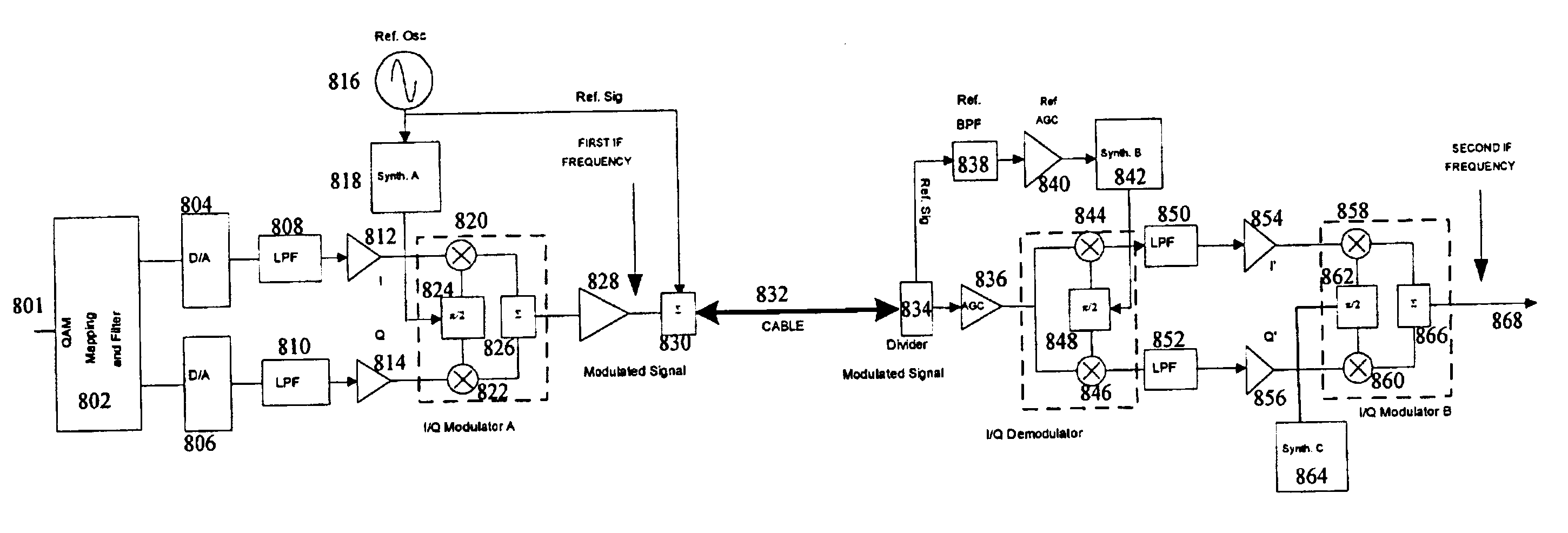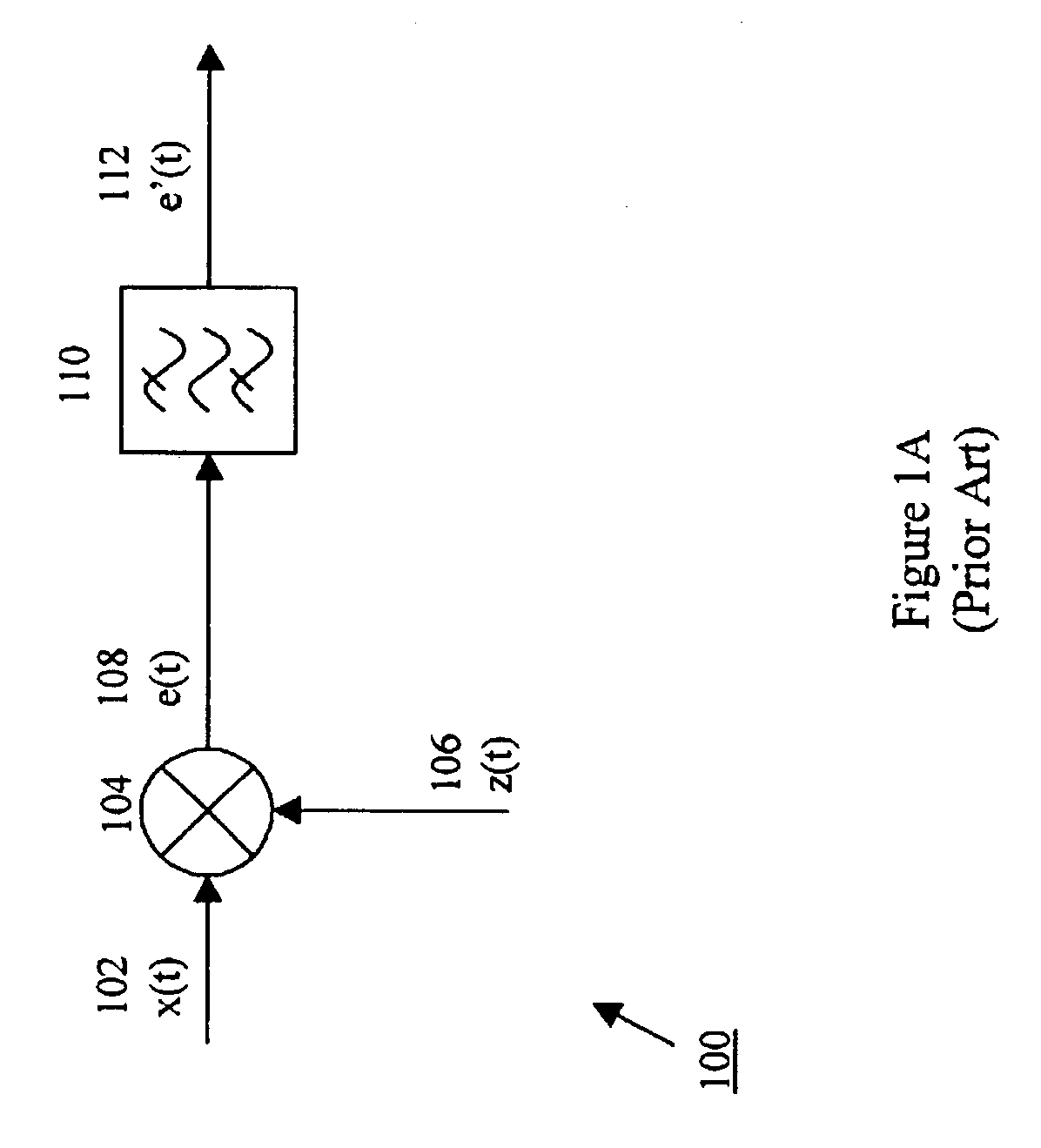Method and apparatus for re-modulation using zero IF
a technology of re-modulation and zero if, applied in the field of communication systems, can solve the problems of reducing the ability to tune the second modulator to an arbitrary frequency, several re-modulations, and reducing the ability to re-modula
- Summary
- Abstract
- Description
- Claims
- Application Information
AI Technical Summary
Benefits of technology
Problems solved by technology
Method used
Image
Examples
Embodiment Construction
The present invention solves many of the problems of traditional approaches. In particular, the present invention provides for frequency translation of a modulated signal from an first IF to a second IF frequency without the need for image rejection filtering. Because the first and second IF frequencies can be arbitrary and no image rejection filtering is required, a wide tuning variability of the second IF can be realized which, in turn, simplifies a third conversion to microwave RF.
In order to understand the present invention, however, it is first useful to first understand some tuning and modulation concepts. As is well known, multiplying a lowpass signal by a high-frequency periodic signal translates the spectrum of the lowpass signal to all frequencies present in the periodic signal. Quite often it is desirable to translate a bandpass signal to a new center frequency. This process can be accomplished by multiplication of the bandpass signal by a periodic signal and is often cal...
PUM
 Login to View More
Login to View More Abstract
Description
Claims
Application Information
 Login to View More
Login to View More - R&D
- Intellectual Property
- Life Sciences
- Materials
- Tech Scout
- Unparalleled Data Quality
- Higher Quality Content
- 60% Fewer Hallucinations
Browse by: Latest US Patents, China's latest patents, Technical Efficacy Thesaurus, Application Domain, Technology Topic, Popular Technical Reports.
© 2025 PatSnap. All rights reserved.Legal|Privacy policy|Modern Slavery Act Transparency Statement|Sitemap|About US| Contact US: help@patsnap.com



